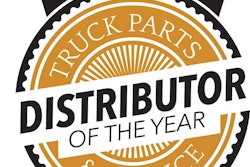By Bill Wade, Wade & Partners
2019: The Year of the B2B Platform
The majority of platform companies focus on B2C services and products such as product marketplaces, ride-sharing apps, financial service apps and more. While many B2B marketplaces and service platforms exist, few have reached the status of modern monopoly popularly attached to everyone from Amazon to FindItParts.
Alex Moazed, CEO of Applico (a leader in online B2B e-commerce development) thinks “In terms of big-name brands, Salesforce is the best known B2B platform … But expect that to change in 2019. While Salesforce will continue to grow its suite of products and services for business, other players will emerge in B2B as well.”
For example, look at Palantir, a data analytics platform founded by PayPal founder Peter Thiel and Convoy, a logistics platform, to have a strong 2019 and vastly expanded B2B platform services.
Way more importantly, it isn’t just tech companies that will push the platform business model on B2B. We expect traditional heavy-duty and auto parts B2B distributors or groups to launch a B2B marketplace of their own.
Still No Mainstream Aftermarket Application of Blockchain
There was really no mainstream application of Blockchain in 2018. We expect this non-trend to continue in 2019. Blockchain technology’s applications may be over-hyped, but it’s a promising technology that’s still working through its ‘emergence’ challenges.
Blockchain’s best known application, Bitcoin, is forecast by some to have a good year, even if blockchain technology as a whole doesn’t expand to any other part of our lives. Watch BC to make serious inroads in all types of logistics – tariff/trade war or not!
Platform Regulation Will Become a Major Issue
Google, Amazon, and Facebook have been embroiled in scandals and controversy this year. One type of scandal was common to all three platform companies: data security and misuse. Security breaches have exposed sensitive user data to would-be thieves.
Often modern monopolies are slow to report the breaches in an effort to avoid a PR firestorm. By hiding security breaches, companies like Google make the need for platform regulation clear. This can easily slop over to the parts business.
Fine-Tune 2018 or Step Up to Real Change?
“If your distributorship is a top 5 percent performer due to perpetual innovation, keep innovating in 2019. If your financial returns are in a low-level rut with an unchanging, aging sales force – then change your belief system to change your results,” advises distribution futurist Bruce Merrifield.
He further suggests that before changing, or even defining, the cultural ‘assumptions’ common to most of your branches or departments, consider these characteristics you may encounter:
- Shared company beliefs are imperfect models for reality. Like the six blind men groping the elephant, we are adamant about what is, but blind to the bigger reality.
- Beliefs accumulate over time. Some used to work (perhaps for unseen reasons). But today, do they engage best next-gen prospective employees and customers?
- Core beliefs are often hidden, unspoken, sacred things. All need to be identified, written down, and tested against the current, changing reality. Or, the blind-spots will expand, causing profits and morale to erode.
- Customer, SKU, and Vendor (Net-Profit) analytics reveal new facts, insights, and beliefs.
- Old Beliefs fight any contradicting facts. Who wants to admit to being wrong? If our expert egos are challenged, then we invent data-free, self-serving counter-rationalizations. We will cite Old-Belief experts and industry pals who share our Belief-Bubble: “confirmation bias.”
If you thoroughly examine Old Beliefs, their defensive power wanes. Do you dare?
In-Depth Strategy Questions
You might do some explorations and tiny, safe experiments that lead to rut-busting insights and results:
- Amazon is teaching (and exponentially empowering) next-gen B2B customers to want 24/7, mobile, Omnichannel buying. Amazon’s end-customer centricity is winning. What are your customer-centric upgrade plans?
- Will you segment your customers into niches that will allow you to out-focus competitors at improving service-value solutions and/or cost-to-serve?
- What are your digital transformation plans to win in the digital, omnichannels of 2021?
Are your plans scary? If not, are you honestly tweaking the same old activities: a new shade of lipstick for the Old Pig? Better 2019 strategy and results will come from updated beliefs. How will you test your existing ones?
Bill Wade is a partner at Wade & Partners and a heavy-duty aftermarket veteran. He is the author of Aftermarket Innovations. He can be reached at [email protected].










